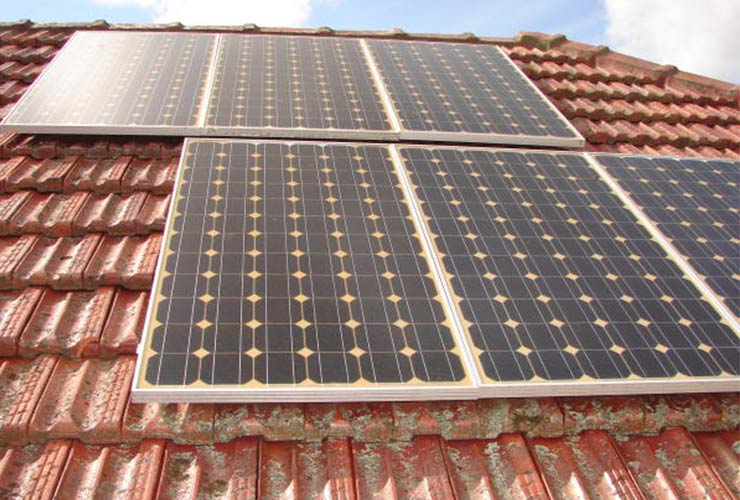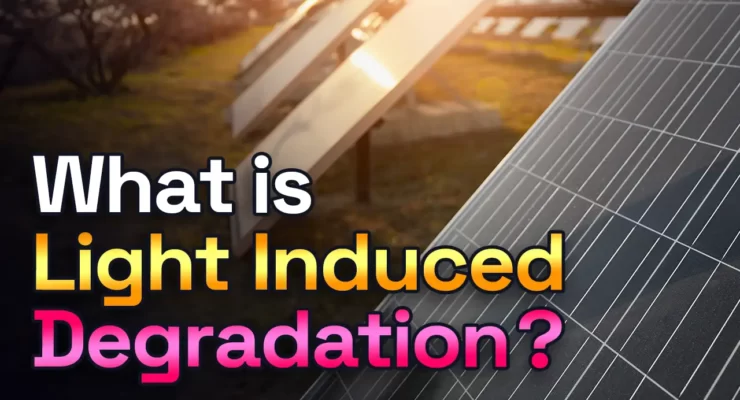Fast read
Solar panels, although lacking moving parts, can degrade over time. Reasons for this deterioration vary, from moisture entering panels due to separated backing sheets to chemical processes like potential-induced degradation.
Light-induced degradation (LID) significantly contributes to this decline, causing a decrease in a solar cell's efficiency upon initial exposure to sunlight. LID primarily affects panels with boron-doped silicon cells, commonly found in crystalline silicon panels.
While newer technologies like N-type solar cells aim to eliminate LID, they remain a concern for many conventional panels. However, LID's impact diminishes over time, with panels typically experiencing a 6-8% efficiency drop after ten years.
Manufacturers provide performance warranties reflecting this reality, ensuring minimal efficiency loss over a solar panel's lifespan. Monitoring system production can help identify efficiency declines, allowing homeowners to address potential warranty claims and maintain optimal solar panel performance.
Do solar panels lose their electricity production over time?
There are also chemical-related phenomena such as potential light induced degradation of the cells. For example, the decreasing capacity of individual cells to generate electricity. Solar panels gradually lose efficiency over time because of annual degradation. Eventually, all panels will lose power. This process may take a few years to become noticeable.
The 25-year power warranty on a solar panel indicates the manufacturer’s trust in its long-term performance. One way to explain this is to imagine a rubber piece on a roof. Over time, it becomes less stretchy because of heat, cold, and UV exposure.
What is Light-Induced Degradation (LID)?
Light induced degradation refers to a loss in efficiency in a new solar cell when it is first exposed to sunlight. This is because of the chemistry in the cell, specifically the boron atoms.
Boron atoms react with oxygen in the air, which reduces the cell’s ability to make electricity.
In just a few hours, a brand-new solar panel was exposed to sunlight for as much as 0.5% of its generating capacity for the first time. After the first exposure and performance drop, the panels will stay mostly stable and only lose the yearly estimated percentage mentioned.
Light induced degradation effects on different types of solar cells
Conventional solar panels are constructed from pure crystalline silicon. To make silicon conductive and able to convert UV radiation into electricity, the panels are “doped” or infused with boron.
Boron is a light element with an atomic number of 5. It has a positive charge and when added to silicon cells, it creates a P-type material. Most of the Monocrystalline technology standard solar panels sold on the Australian market today use P-type crystalline cells.
Light induced degradation is caused by the presence of these boron atoms when combined with oxygen. This makes it less efficient at producing electricity.
The passivated emitter rear cell (PERC) is a high-efficiency-type solar cell invented in Australia. However, the structure of these cells makes them particularly susceptible to LID. This is because P-type PERC cells use more boron doping, which can cause light induced degradation.
To counter this, panel manufacturers use higher-purity silicon that leaves less oxygen to react with the Boron. This reality presents a technical challenge that can cause PERC cells to have higher light induced degradation than other types of solar modules.
N-type solar cells are one technology that completely avoids the LID issue. Remember I said that p-type solar cells are so named because they contain positively charged Boron atoms?
N-type cells are doped with Phosphorus atoms to prevent the build-up of Boron oxide that causes LID. The light induced degradation problem can be eliminated if there is no presence of boron.

Should you be concerned about Light Induced Degradation?
Light induced degradation is not something solar homeowners should worry about too much. Solar panels will experience a more significant efficiency drop in the first year for various reasons, including light induced degradation. The panel’s degradation becomes slower and steadier after that – so overall, we are discussing a possible performance decrease of 6-8% after 10 years for many panels. It’s noteworthy but not a strong argument against installing solar panels.
The performance warranty that your solar panel has will reflect this reality. When you research solar, you might notice that two warranties will be offered on a solar panel. The first, called a Product Warranty, covers defects in the product and, in our opinion, is the key warranty to rely on. The second is called the Performance Warranty and covers the panel’s efficiency. Such as how much generating capacity a panel will lose over its lifetime, often seen as 25 years.
Many panels also nominate a further degradation factor after year one, such as 0.5% every year after the 1st year, which usually has the highest degradation factor.
Every solar panel we have researched has a performance warranty that allows for a more significant power drop-off in its first year than it does for subsequent years. Most often, warranties guarantee that solar panels won’t lose more efficiency than 2 to 3% in the first year and 0.5 to 0.8% yearly.
You can check the degradation factor of your panels by studying their datasheet or performance warranty, where this information is revealed.
What does this all mean for solar homeowners?
You can monitor your system’s production over time. Most monitoring solutions, either as part of the inverter package or as a self-contained monitoring solution, such as Solar Analytics, allow you to see your solar system’s daily, monthly and annual kWh output performance. So, if you experienced similar weather over 2 years and your production numbers have been much lower in the second year, you could have seen a higher-than-expected panel degradation.
Higher-quality monitoring software will also send you warnings. For example, via email, if your PV system’s performance is lower than it should be – using historical weather data. If your system is not producing the same output levels as it used to, and if there has been a significant drop in panel efficiency. You could consider filing a warranty claim with the panel manufacturer.
